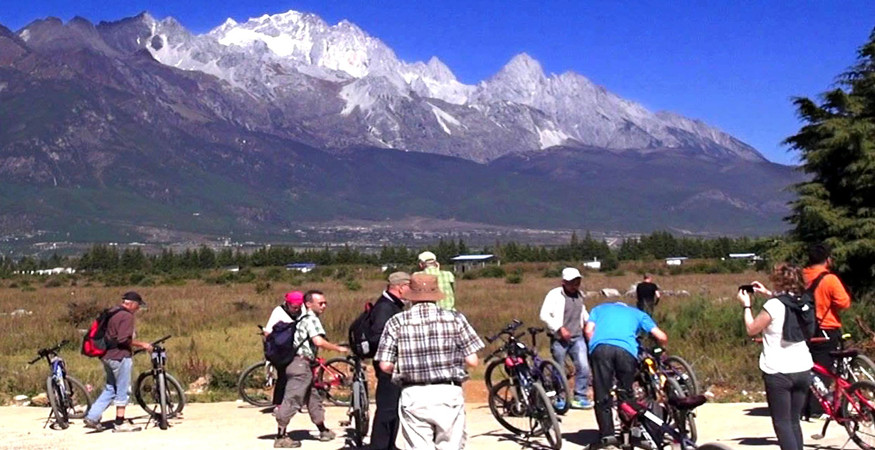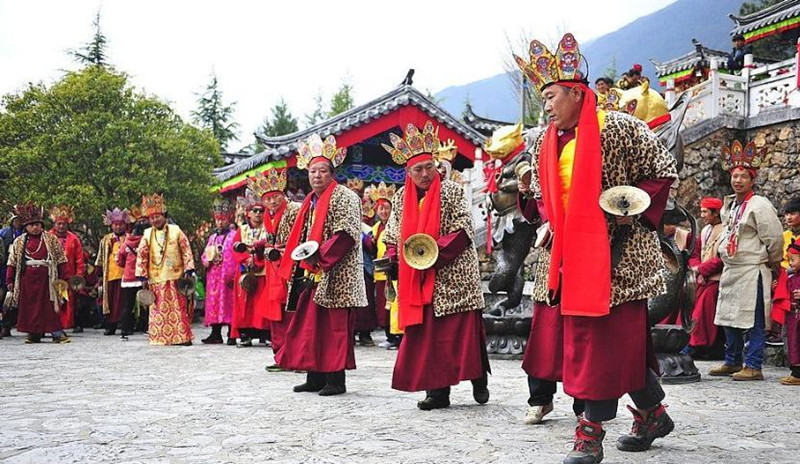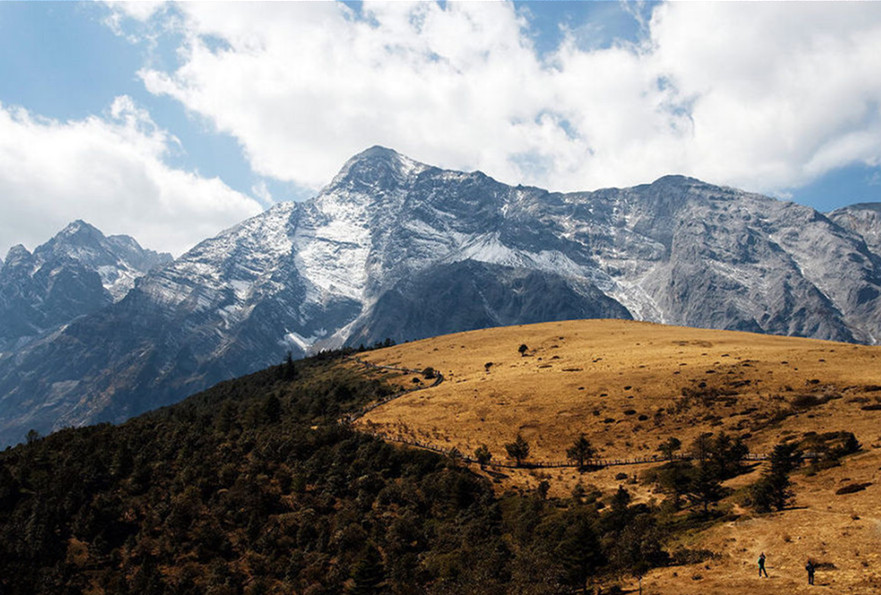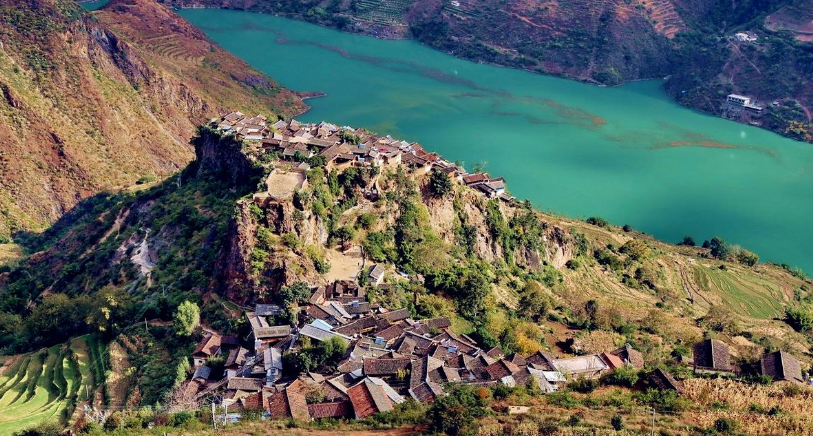
Lijiang Overview
Lijiang has a history of at least 800 years and may date as far back as the Song Dynasty. It is located in the northwestern portion of Yunnan and borders Sichuan. Lijiang is one of the most famous tourist destinations in Yunnan Travel. Lijiang is considered as a fairyland blessed with fresh air, clear streams, breathtaking Jade Dragon Snow Mountain and an undisturbed landscape inhabited by Naxi Ethnic Minority. Lijiang Overview introduces the basic information for you to have a better Lijiang Tour.
Basic Information
- Chinese Name: 丽江市
- English Name: Lijiang City
- Location: Northwest Yunnan
- Administrative Category: Prefecture-level City
- Seat of Government: Dayan Town, Gucheng District
- Area: 20,600 square kilometers
- Population: 1,285,000(2016)
- Main Ethnic Groups: Bai, Yi, Lisu, Naxi, Dai, Mosuo, Pumi
- Airport: Lijiang Sanyi International Airport and Ninglang Luguhu Airport.
- Top Universities: Tourism and Culture College of Yunnan University, Lijiang Teachers College
- Important Festival and Activities: Sanduo Festival, Kuoshi Festival, Torch Festival, Baba Festival, Daogan Festival, Lugu Lake Circling Festival, Mango Culture Festival
- Railway Station: Lijiang Railway Station
- Famous Attractions: Lijiang Ancient Town, Jade Dragon Snow Mountain, Tiger Leaping Gorge, Lugu Lake, Shuhe Ancient Town, Lashi Lake, Black Dragon Pool, Mu's Residence
Geography
Lijiang City is located in the northwestern portion of Yunnan and borders Sichuan. It is in a region where the Qinghai-Tibet Plateau and Yunnan-Guizhou Plateau converge. The terrain of Lijiang City is high in the northwest and low in the southeast. The highest peak of Jade Dragon Snow Mountain is 5,596 meters above sea level. The lowest point is the Tangba river mouth of Shilongba Township, Huaping County, with an altitude of 1,015 meters. To the west of the Jade Dragon Snow Mountain is the mountain range of the mountain gorge in the Hengduan Mountains. The mountains and valleys are deep and steep. The east of Jade Dragon Snow Mountain belongs to the mountain plateau with the higher elevation. On both sides of the main mountain range, there are also extensively developed east-west valleys, forming intricate plots of landforms and landscapes. There are 111 large and small dams scattered between the mountains, with the altitude of about 2000 meters. Of which Lijiang Dam is the largest, with an area of about 200 square kilometers, with an average elevation of 2,466 meters.
Climate
With an altitude of 2,400 meters above sea level, Lijiang Climate belongs to the highland climate with distinct dry and rainy seasons. The average annual temperature is 12.6℃ without drastic changes. It has three different climatic zones, ranging from subtropical in the southeast, warm temperatures in the central Lijiang, and cold temperatures in the northwest. What's more, vertical climate in some highlands can also be seen in Lijiang. Without too much change from spring to winter, the weather of Lijiang allows visitors to get there at any time. As the one of the important destinations in the classical Yunnan Travel, Lijiang is a place that is suitable to visit all year around.
Best Time to Visit Lijiang
Lijiang is a place that is suitable to visit at any time. What's more, The best time to visit Lijiang is summer and autumn, which are the most favorable seasons. The temperatures in spring and winter differ greatly.
Administrative Divisions
As of 2015, Lijiang City has jurisdiction over 1 district, 4 counties, including 4 subdistricts, 13 towns, 28 townships and 18 ethnic townships. The government is located at Dayan Town, Gucheng District.
- 1 District: Gucheng District(古城区)
- 4 Counties: Yulong Naxi Autonomous County(玉龙纳西族自治县), Yongsheng County(永胜县), Huaping County(华坪县), Ninglang Yi Autonomous County(宁蒗彝族自治县)
History
The famous ancient Lijiang City has a history of 800 or 900 years. As early as the South Song Dynasty (1127—1279AD), the city had already begun to take shape. From the Ming Dynasty (1368-1644), Lijiang was called “Dayan County”, literally meaning ‘ink stone’This is because the city is situated in the middle of the Ljiang Dam and surrounded by green mountains and a river running through the forest, evoking a green ink stone, from which Lijiang itself was then named. Since the Qing Dynasty (1644-1911), it has been the distribution center and a confluence for trade along the old tea-horse road. In 1997 Lijiang was listed as one of the UNESCO Heritage Sites.
More about History of Lijiang
Culture
As the one of the important destinations in the classical Yunnan Travel and a multi-ethnic place, Lijiang is the base camp of 22 ethnic minorities. In addition to the Han people, Naxi and Yi minorities are the main ethnic groups in Lijiang. Lijiang Ethnic Culture is very colorful. When you come to the mysterious Lijiang, it is easy to find Naxi architecture everywhere and listen to the Naxi language said by Naxi people and feel the Dongba culture. Each ethnic minority there has its own unique customs, traditions and architectural styles, making Lijiang picturesque place. You will have the chance to experience the life of Naxi people, learn about their lifestyle, religion and cuisine. The unique scenery, coupled with fascinating Lijiang Ethnic Culture makes it attractive and charming. Come to Lijiang and take a Lijiang Cultural Tour.
Transportation
Lijiang Transportation, to some extent, is strongly linked to Lijiang Tours. As a famous tourist attraction in China, Lijiang has the best transport network compared with other sightseeing places in China. At present, the main transportation methods in Lijiang are consisted of airplane, trains, buses and so on. Lijiang has an extensive public transport system, largely based on buses, taxis. Therefore, it is very convenient to get to Lijiang by air, train, long-distance bus.
More about Lijiang Transportation
Things to Do
When you come to Lijiang, do not worry what to do in Lijiang. Lijiang Attractions are abundant and are full of all kinds, including natural sceneries, human sceneries and villages where you can experience the rich ethnic culture. As the capital of Naxi Kingdom, Lijiang is one of important UNESCO Heritage Sites. The beautifully preserved Lijiang Ancient Town is abundant in natural and cultural resources. Lijiang is a paradise for the natural attractions, such as the grand Jade Dragon Snow Mountain, wonderful Tiger Leaping Gorge, mysterious Lugu Lake. There are a number of places of historical interest and natural scenic spots in Lijiang for your exploration. Come to Lijiang and take a unique Lijiang Tour for your Yunnan Travel.
Top Attractions in Lijiang
Lijiang, a place with long history, is always a heaven for many people all over the world. Lijiang is also a perfect destination for people who want to seek for antiquity, explore the fascinating natural sceneries. When you come to Lijiang, the top attractions in Lijiang are must-visit. Lijiang, known as a land of wonders, both natural and man-made, will make you forget to leave.
- Lijiang Ancient Town
- Jade Dragon Snow Mountain
- Tiger Leaping Gorge
- Lugu Lake
- Shuhe Ancient Town
- Lashi Lake
- Black Dragon Pool
- Mu's Residence
- First Bend of Yangtze River
- Baisha Murals
- Blue Moon Valley
- Ganhaizi Meadow
- Lige Island
- Three Parallel Rivers
- Impression Lijiang Show
Economy
In 2017, Lijiang completed the annual GDP of 343.849 million yuan, with an increase of 9.4% over the previous year. The growth rate is 2.5 percentage points higher than the national level, lower than the province's 0.1 percentage point. From the perspective of three main industries: the added value of the primary industry was 496.125 million yuan, with an increase of 5.8%, 0.4 percentage points lower than that of the previous year; the added value of the secondary industry was 13,713.51 million yuan, with an increase of 12.1%, an increase of 4.3 percentage points over that of the previous year; the added value of the service sector 15,273.73 million yuan, with an increase of 8.1%, an increase of 1.5 percentage points over that of the previous year. Economic growth is mainly supported by the secondary industry and service sector. The contribution rates of the primary, secondary and service sectors to economic growth were 9.42%, 51.82% and 38.76%. The per capita GDP of the city was 26,369 yuan, with an increase of 9.0% over that of the previous year.
Natural Resources
Biological Resources
Lijiang has a wide variety of plant resources and has become one of the famous plant protection bases in China. It is one of the key forest areas in Yunnan Province. In 2015, the city's forestry land area was 1.63 million hectares, accounting for 79.36% of the land area, and the forest coverage rate was 66.15%. The wood stock volume is 105 million cubic meters. There are more than 13,000 kinds of plants in the territory, and there are as many as 2,988 seed plants. The tropical, temperate and frigid plants are distributed here. There are many species of rare and precious plants, such as Yunnan hemlock, Chinese yew.
There are 83 species of mammals, accounting for 30% of the number of mammals in Yunnan. There are more than 290 species of birds, accounting for 37.6% of the number of birds in Yunnan. There are rare and endangered animals with national key protection, such as Yunnan snub-nosed monkey, clouded leopard, snow leopard, macaque and lesser panda. There are plenty of precious butterfly resources. Chenghai Lake has 29 species of fish, belonging to 9 families and 12 genera, and 17 species of indigenous fish. The annual fishery output is 2,200 tons. Chenghai Lake is one of the three lakes in the world that are rich in natural spirulina.
Water Resources
The Jinsha River flows through Lijang City for 615 kilometers, with an average annual flow of 1541.9 cubic meters per second and an annual transit volume of 41.63 billion cubic meters. The total annual runoff of water resources (self-produced water) is 8.355 billion cubic meters except for the flow of the Jinsha River. The surface runoff is 5.541 billion cubic meters, and groundwater is 2.814 billion cubic meters. The total water resources of Lijiang City is 49.985 billion cubic meters.
Mineral Resources
Lijiang City has a unique geotectonic location and a variety of metallogenic geological conditions, forming a rich and diverse mineral resources, mineral resources with regional characteristics. The city has found more than 30 kinds of minerals, more than 350 mineral producing areas, 1 natural gas producing area and dozens of geothermal producing areas. Coal reserves and quality are the crown of West Yunnan, and copper, granite and other mines have high mining value.
Keep Reading

 7 Days GolfingTour
7 Days GolfingTour
 8 Days Group Tour
8 Days Group Tour
 8 Days Yunnan Tour
8 Days Yunnan Tour
 7 Days Shangri La Hiking
7 Days Shangri La Hiking
 11 Days Yunnan Tour
11 Days Yunnan Tour
 6 Days Yuanyang Terraces
6 Days Yuanyang Terraces
 11 Days Yunnan Tour
11 Days Yunnan Tour
 8 Days South Yunnan
8 Days South Yunnan
 7 Days Tea Tour
7 Days Tea Tour
 8 Days Muslim Tour
8 Days Muslim Tour
 12 Days Self-Driving
12 Days Self-Driving
 4 Days Haba Climbing
4 Days Haba Climbing
 Tiger Leaping Gorge
Tiger Leaping Gorge
 Stone Forest
Stone Forest
 Yunnan-Tibet
Yunnan-Tibet
 Hani Rice Terraces
Hani Rice Terraces
 Kunming
Kunming
 Lijiang
Lijiang
 Shangri-la
Shangri-la
 Dali
Dali
 XishuangBanna
XishuangBanna
 Honghe
Honghe
 Kunming
Kunming
 Lijiang
Lijiang
 Shangri-la
Shangri-la
 Yuanyang Rice Terraces
Yuanyang Rice Terraces
 Nujiang
Nujiang
 XishuangBanna
XishuangBanna
 Spring City Golf
Spring City Golf
 Snow Mountain Golf
Snow Mountain Golf
 Stone Mountain Golf
Stone Mountain Golf













